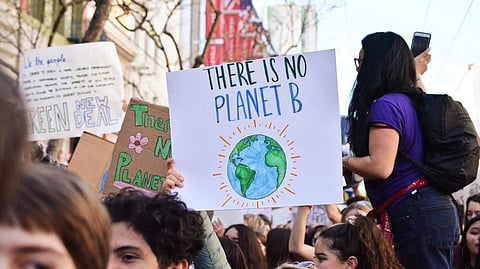

Last year, the Centre’s draft Environmental Impact Assessment (EIA) was a red alert for many environmentalists. They could picture apocalyptic storms not just on the environment but most importantly on tribal, peasants, coastal and fisher communities whose lives and livelihood depend on a healthy ecosystem — it is for this very reason that a group of young eco-activists translated parts of the draft into 14 languages and disseminated it online so that people could understand and raise objections or comments accordingly. The entire campaign against EIA was a collaboration amongst environmental organisations such as Yugma Network, Fridays For Future, Let India Breathe and Muse Foundation, to name a few.
At present, the official draft EIA is available only in Hindi and English. After deliberations that lasted for months, the government finally told the Delhi High Court last week that it is willing to translate the draft into 22 languages listed under the eighth schedule of the Indian Constitution. However, this is only a tiny victory for these young environmentalists.
Sital Kumar (21), a native of Odisha and a translator with Yugma Network, an environmental organisation, said, “Texts in vernacular languages can reach a lot of people. I decided to volunteer to translate the draft in Odia so people can understand what is unfolding,” Sital took a few days to translate parts of EIA, he now looks at the Centre’s willingness as glass-half-full as there is still fog around the entire issue. "Odisha has seen several natural disasters over the years. We know the importance of environmental stability," said the student of political science at the Ashoka Univerisity.
Yugma Network had put out a call for translators on their social media handle when the draft was first made public. One of its co-founders, Anjali Dalmia (22), said, “We reached out to students' unions across India to help translate the draft. We managed to get about 60 to 70 volunteers for translation of all the main points and issues with the draft EIA. All of it was done within a month.”
Hamza Abdullah (27) from Delhi, who translated the draft in Urdu, said that he has seen many protesting the waste-to-energy plant in Delhi’s Okhla but the Urdu-speaking community there lacked awareness about it. "When I saw the call for translators I felt that if issues such as draft EIA are translated, it can reach a lot of people in a democratic society,” said Hamza. Within two days, his work was ready to be circulated online but nobody could distribute it in-person as COVID had just hit.
Videos were made in vernacular languages, articles were written, even small explainers through illustrations and graphics were put up online. Everything was verified and vetted by someone who understands the language. But Sital, Anjali and Hamza believe more could’ve been done even as their work was viewed by thousands.
Disha Ravi, the co-founder of Fridays For Future (FFF), said that FFF volunteers were involved in the translation process as well. “We even held webinars in different languages about issues with draft EIA with people across India, many of these were led by people from vulnerable communities who are associated with FFF,” she added. She said that the campaign against EIA reached lakhs of people because it was done virtually.
Disha, like many other environmentalists, hopes that the government stays on its word and translates it for public consultation. However, as of now, there is no clarity on whether the government will hold a public consultation in the first place and open up the objection window. Nishant Bangera (29), the founder of Mumbai-based Muse Foundation, said, "Logically they need to extend the objection window otherwise there is no use of translating the draft EIA."
The draft notification allows for post-facto approval for projects, wherein environmental clearances for corporate projects can be awarded at a later stage where construction has already begun as opposed to first assessing the environmental risk and then granting clearances. Not just that, the draft notification also dilutes the public consultation process from 30 days to 20 days — giving less time to people to submit their responses during a public hearing for a project seeking environmental clearance. "All this happened at the peak of COVID last year when people couldn't get out and protest," Nishant said.
Earlier this year, the Delhi High Court explained to the Ministry of Environment, Forest and Climate Change that people in remote areas are "our citizens" who need to be heard and may not understand the draft if published only in English and Hindi. The court had said that it would be easy for the government to get the draft EIA published in all the languages. The government told the court in January that it had received more than 20 lakh comments and objections.
